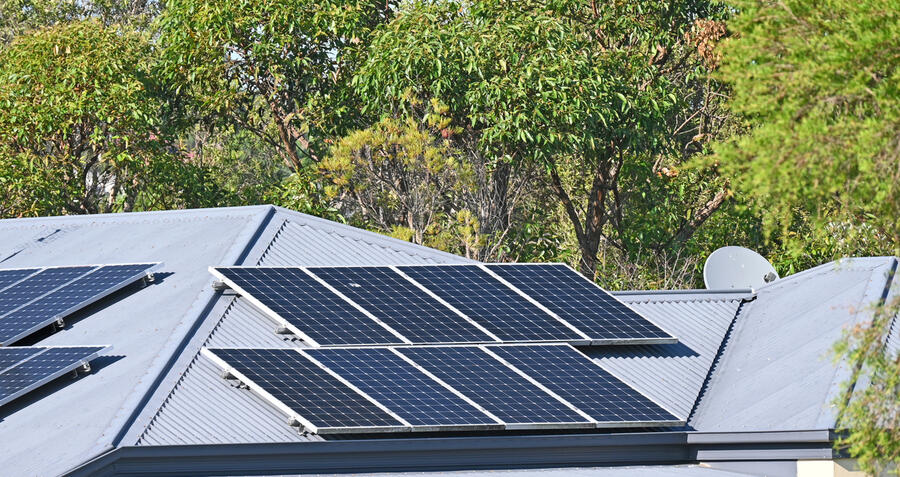August 2024
With the Australian Energy Council reporting that nearly 15% of the country's households have already installed solar panels on their roofs, it's clear that the Australian Solar Revolution has already begun. That's more than 1.6 million homes enjoying the benefits of producing their own solar energy, reducing both their carbon footprint and their electricity bills.
Retail electricity prices are steadily on the rise, and solar power is beginning to provide a cheaper source of electricity. However, solar panels create most of their power during the day when homeowners aren't typically around to use them. This means that solar users must sell that excess solar energy back to the grid, and then buy energy back again when they are home – usually when the sun's gone down and their systems aren't producing.
Australian households pay far more for the energy they draw down from the grid than they earn from selling their surplus solar energy back to it. In 2016, the Climate Council found that Australian households typically paid between 20-35c per kWh to import electricity to their houses, but only received 5-8c per kWh for their energy exports back to the grid. When you combine this with the rising cost of electricity, it limits how much money you can save from a residential solar pv system.
There are alternatives, however. Today, it now makes more economic sense for households to try to use more of the solar they generate themselves, rather than exporting it to the grid.
What are the benefits of solar battery storage?
Adding a battery to your existing solar system is one way to use more of the solar you generate. A solar battery system lets you store the surplus electricity your panels create, so you can use it later in the day, and can, in fact almost double how much solar you use. Figures from the Climate Council show that adding a 4kWh battery to a 5kW residential solar system can increase the amount of self-generated solar electricity a household consumes from 30% to 60%.
Are solar batteries expensive?
The solar battery energy storage system has actually been around for decades but it was expensive, and so out of reach for most of the population. But thanks to recent leaps in technology, batteries are fast becoming a more viable option for solar consumers. Battery costs fell by 14% each year from 2007 to 2014, and even more dramatic cost reductions are expected in the not-so-distant future. Analysts predict that half of all Australian households will adopt solar and battery systems in the next 10 years.
Does a solar battery installation make sense for you now?
If you're mainly interested in reducing your carbon footprint, then adding a solar battery to your home solar system is probably a natural next step.
It may also be the right decision if you're interested in saving money and reducing your energy bills. But to make sure it's a sound financial decision, it's important to weigh up the total cost of the solar battery and its installation against how much you're likely to save over time. Whether it's the right choice for you will depend on your personal consumption patterns, circumstances and motivation. It's a good idea to get advice from a reputable retailer who can help you decide if installing a solar battery to your solar system is a good idea for you right now and if so, what options will best suit your needs.
How do you choose a solar battery?
When choosing a solar battery, there are some important things to keep in mind. Prices for batteries largely depend on their storage size, their efficiency level and lifecycle. The larger, more efficient and longer the lifecycle, the more you will get from your battery, but the more expensive it will be.
If you think you might want to add another battery to your home solar system later on, consider getting a model that lets you stack batteries on top of each other to increase your overall solar battery capacity.
What are the other options?
While batteries can certainly make financial sense for some solar owners, others may find that it's better to wait until the price drops even further over the next few years, and instead invest in preparing their system for battery storage.
If your solar panel system size is small in capacity, you may need to think about upgrading it to a size that can charge a battery on a cloudy day. Your solar system will also need a battery inverter to make use of the battery. A battery inverter converts DC electricity into AC electricity to discharge the battery, and AC energy into DC energy to charge it again. Unfortunately, not all inverters fit with all types of batteries, so your choice of battery may be directed by the specifications of your current solar system. Your retailer will be able to talk you through the options that will best suit your system.
What about joining a virtual power plant?
A virtual power plant (VPP) can be a great alternative for those who want to maximise the value of their solar and battery investment. By joining a VPP, you can connect your solar and battery system to a network that helps balance supply and demand on the grid. This can lead to additional savings and benefits for your household.
Want to know more?
Contact us to talk about options to upgrade your home solar system.




